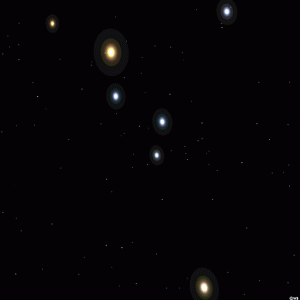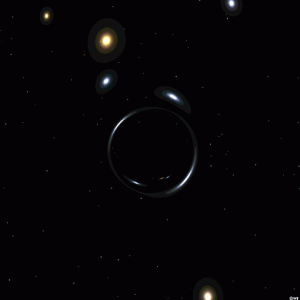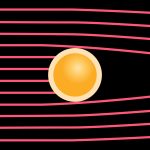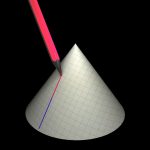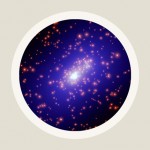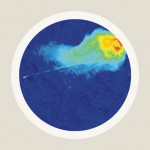Black holes & Co. / Elementary tour part 2: Black holes
When even more massive stars explode in a supernova, the collapsing central region will generically have so much mass that even neutron matter cannot halt the collapse. The collapse continues, and when this happens, a black hole is born (more precisely: a stellar black hole with one to ten times the mass of our sun).
The black hole itself isn’t a solid object, but rather a region of space with very special properties: Matter or light can enter that region from the outside, but nothing that has entered can ever return. The border separating this region from the rest of the world is called the event horizon or, more simply, the horizon of the black hole. In the simplest case, it is shaped like the surface of a sphere. Whatever enters through this surface can never return to the outside world.
As the name implies, an outside observer will receive no light from a black hole. However, if you could come close enough, you could notice how its presence deflects the light of far-away objects behind it. A hypothetical example can be seen on the following pictures. The first shows a region of the sky, as seen by an astronaut drifting through space:
The next image shows the same region of the sky, with the same stars; now, however, there’s a black hole with the same mass as our sun, sitting in space 500,000 kilometres (300,000 miles) away from our hypothetical astronaut:
The light of the stars and galaxies close to the center of the image is deflected by the black hole’s gravitational influence. The most obvious effect is that the light from one of the objects is distorted to form a ring around the black hole. This phenomenon, called an “Einstein ring”, only occurs when the object and the black hole are precisely aligned with the observer. Apart from the Einstein ring, the black hole is rather unobtrusive. If the configuration were slightly changed so that there were no ring at all, even an observer this close to the black hole would be hard-pressed to see it.
To the best of their knowledge, terrestrial astronomers are significantly further (more than a thousand light years) away from the nearest stellar black hole – a comforting thought, in a way. They need to look at indirect signs to deduce the presence of a black hole. Luckily, these objects exert a strong influence on their immediate surroundings, for instance by deflecting the movements of nearby stars. Black holes can also attract gas from a stellar neighbor, which then swirls into the black hole in the form of an ultra-hot accretion disk (which gives of strong X-ray radiation due to its high temperature). Whenever such observations indicate the presence of a massive object, too compact to be a neutron star, astronomers are looking at a black hole candidate.
Due to their compactness and mass, black holes are promising sources for gravitational waves. The following (false colour) image shows a computer simulation of the gravitational waves produced as two black holes merge with each other to form a larger black hole.
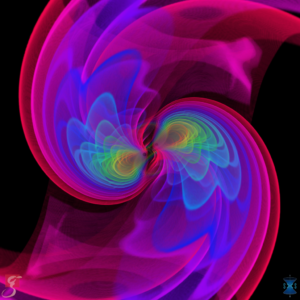
© S. Ossokine, A. Buonanno (Max Planck Institute for Gravitational Physics), Simulating eXtreme Spacetimes project, D. Steinhauser (Airborne Hydro Mapping GmbH)
There’s a good chance that the first gravitational waves to be detected here on earth will be those from the collision and merger of two orbiting stellar black holes, or neutron stars.



